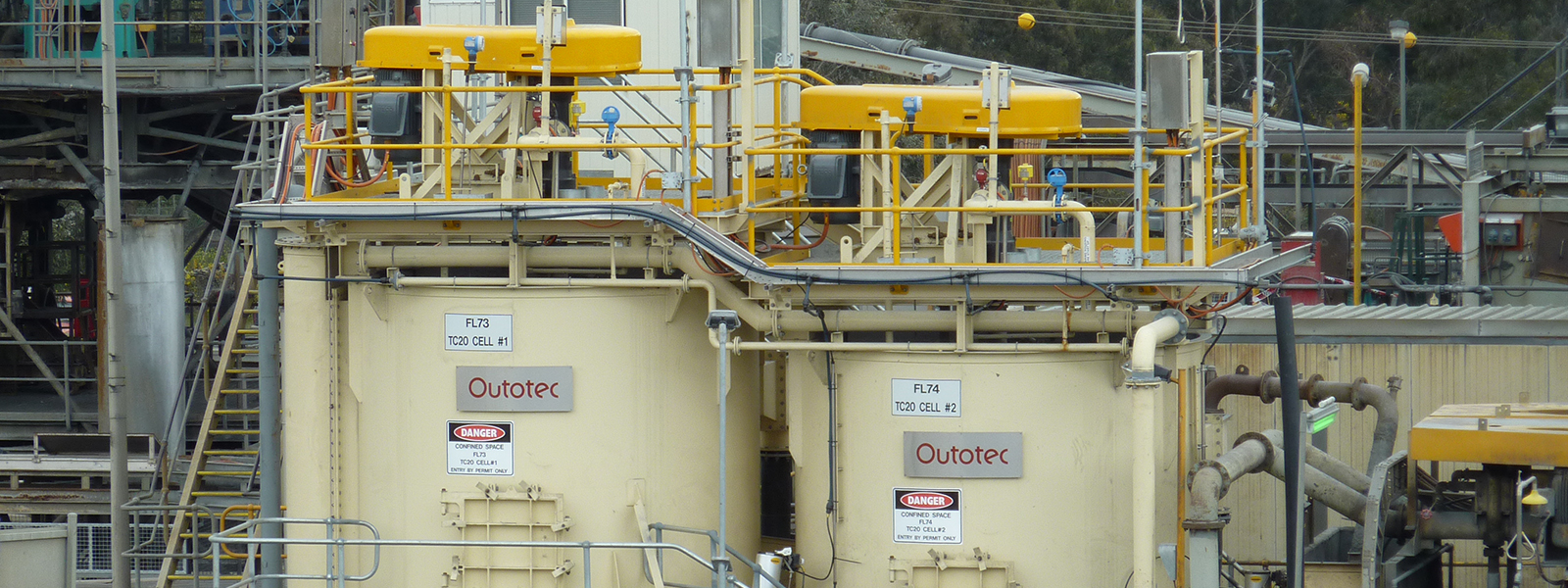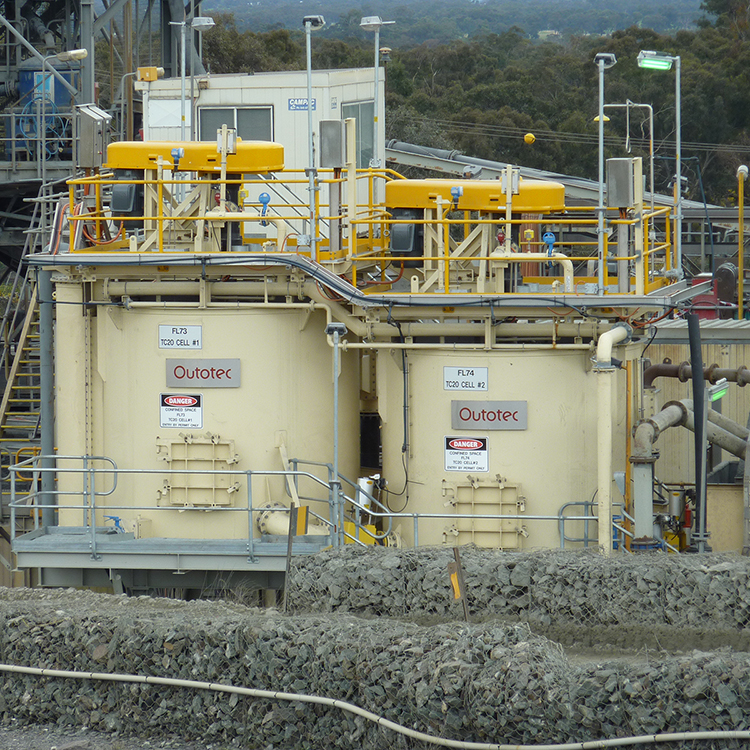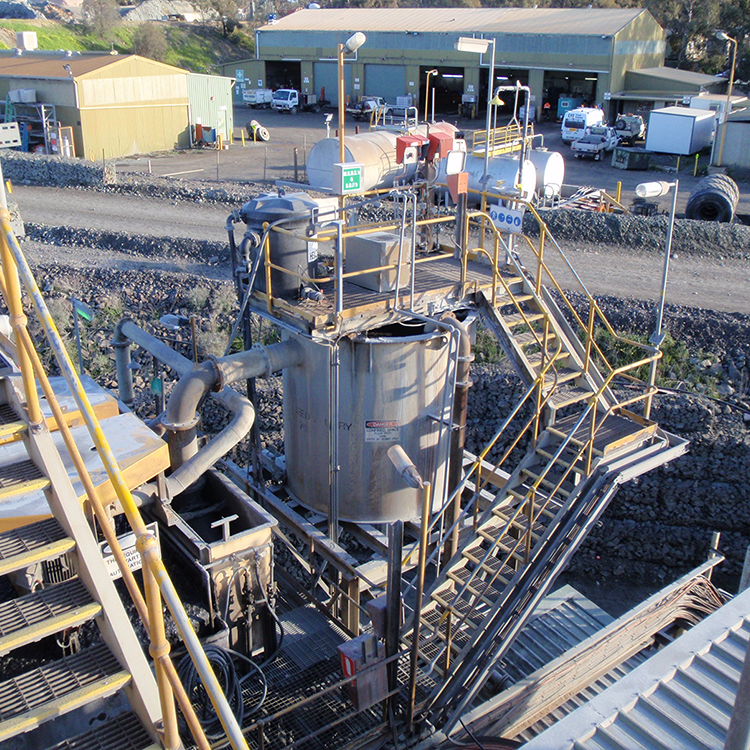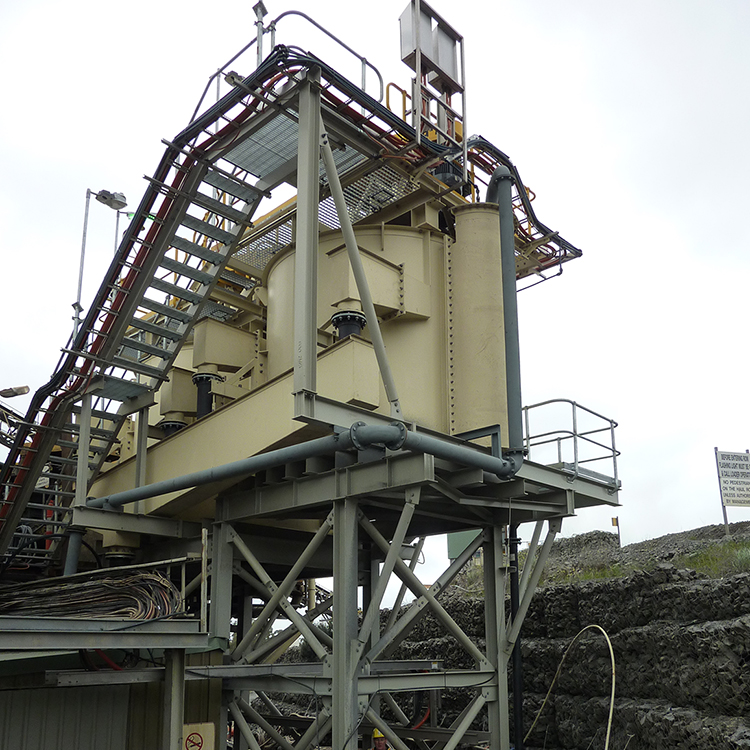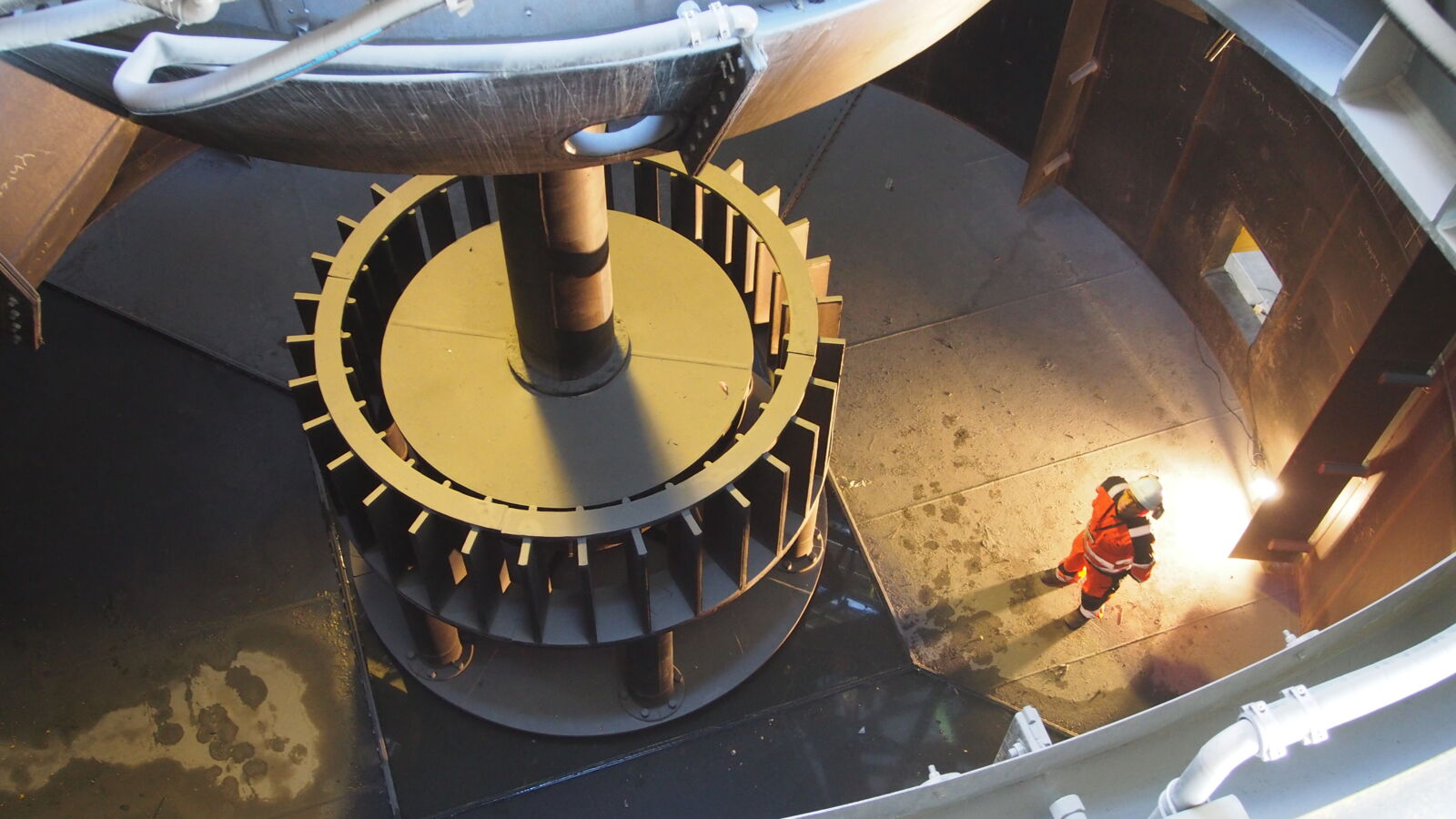Northgate’s Stawell Gold mine is located alongside the town of Stawell, northwest of Ballarat in central Victoria, Australia. Stawell has a history of gold mining dating back to the mid-19th-century Victorian gold rushes. It is an underground gold mine, with a long 26-year history, having produced its two millionth ounce in March 2010.
At Stawell, one of its main aims is to achieve operational excellence. A change in production profile requiring the processing of lower grade ore at higher throughput rates solicited the need for increased recovery condition in the milling environment.
Flotation circuit
The original flotation circuit at Stawell consisted of a bank of eight mechanical trough cells in the rougher circuit, followed by two banks of two OK3 Outotec cells as cleaners. The feed rate to the cells was between 90–105 tph, at 50–55% solids. The overall flotation circuit was not performing at an optimal rate due to entrainment problems in the rougher cells when feed density increased from 45% to 55% solids, typically at 105 tph. In anticipation of future production levels and as part of Stawell’s focus on operational excellence, it was decided to upgrade the flotation circuit at Stawell. Since site’s test work had shown that a 12.5 m3 conditioning tank was no longer required and could be removed, the new rougher cells were to be installed in that location.
Rougher circuit optimization
Following a site audit from Outotec Services, a 2 x TankCell 20 configuration was proposed to help optimize flotation operation. The old rougher circuit had all cells on the same level and was prone to back mixing, short-circuiting, and flotation inefficiency. Additionally, the old circuit had to operate with a very shallow froth depth in order to get the froth concentrate to the collection launders.
Outotec Services proposed replacing the existing rougher circuit of eight cells with two TankCell 20 cells. These cells were to be equipped with larger TankCell 30 mechanisms, which would allow operation at very high percent solids (50% and over). The TankCell design also allows a much deeper froth depth and better concentrate grade through optimized launder lip length and surface area. Outotec TankCells are renowned in the industry for their superior performance, ease of operation, and reduced power and air consumption.
Turnkey installation
Outotec Services was commissioned to handle the complete turnkey solution of the new rougher circuit, including design, supply, installation, and commissioning. This comprised all civil works, electrical, instrumentation, mechanical, ancillary equipment, piping, and structural steelwork. Plant cut-in services were also included in the project scope, along with the supply of two blowers, which were to provide for the complete flotation circuit at Stawell. The schedule was demanding but achievable, with work to commence in February 2010 and complete in September 2010, just 30 weeks later.
Partnership approach
It was decided to adopt a partnering approach between Stawell and Outotec Services, as this collaborative method ensured open communication, with all parties having greater ownership of the project and its aims. The close teamwork between Stawell and Outotec Services ensured meticulous planning and enabled the site to be fully operational at all times. Pipework and electrical easement ducts, for example, were rerouted early in the project and helped ensure continuous site operation. Issues such as tie-in points for new cells and rerouting of pipework were also planned upfront and all disruptive work was completed during shutdowns, ensuring no interruption to production. The connections to the new TankCells were conducted during one of Stawell’s scheduled shutdowns.
